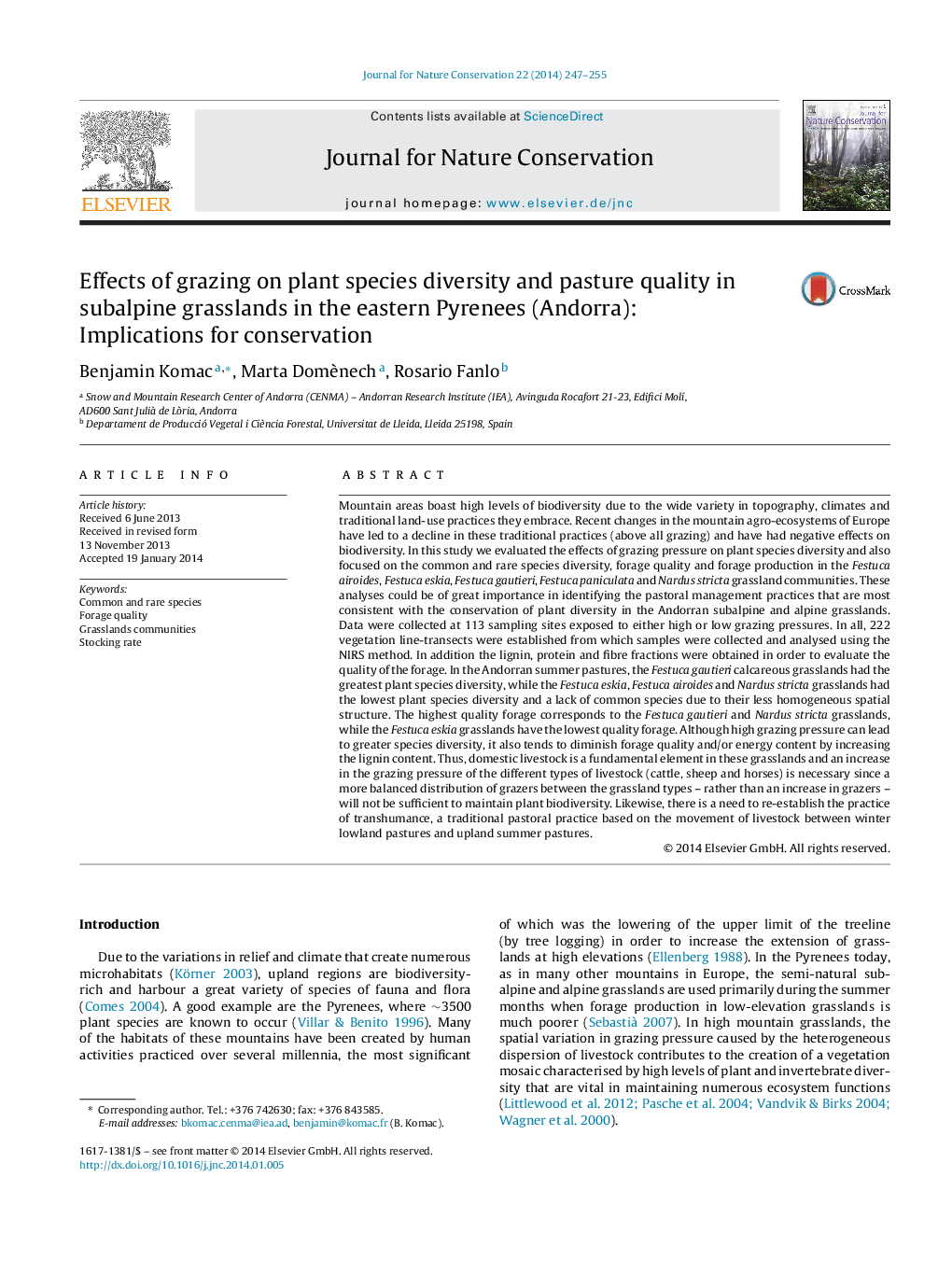| Article ID | Journal | Published Year | Pages | File Type |
|---|---|---|---|---|
| 4399817 | Journal for Nature Conservation | 2014 | 9 Pages |
Mountain areas boast high levels of biodiversity due to the wide variety in topography, climates and traditional land-use practices they embrace. Recent changes in the mountain agro-ecosystems of Europe have led to a decline in these traditional practices (above all grazing) and have had negative effects on biodiversity. In this study we evaluated the effects of grazing pressure on plant species diversity and also focused on the common and rare species diversity, forage quality and forage production in the Festuca airoides, Festuca eskia, Festuca gautieri, Festuca paniculata and Nardus stricta grassland communities. These analyses could be of great importance in identifying the pastoral management practices that are most consistent with the conservation of plant diversity in the Andorran subalpine and alpine grasslands. Data were collected at 113 sampling sites exposed to either high or low grazing pressures. In all, 222 vegetation line-transects were established from which samples were collected and analysed using the NIRS method. In addition the lignin, protein and fibre fractions were obtained in order to evaluate the quality of the forage. In the Andorran summer pastures, the Festuca gautieri calcareous grasslands had the greatest plant species diversity, while the Festuca eskia, Festuca airoides and Nardus stricta grasslands had the lowest plant species diversity and a lack of common species due to their less homogeneous spatial structure. The highest quality forage corresponds to the Festuca gautieri and Nardus stricta grasslands, while the Festuca eskia grasslands have the lowest quality forage. Although high grazing pressure can lead to greater species diversity, it also tends to diminish forage quality and/or energy content by increasing the lignin content. Thus, domestic livestock is a fundamental element in these grasslands and an increase in the grazing pressure of the different types of livestock (cattle, sheep and horses) is necessary since a more balanced distribution of grazers between the grassland types – rather than an increase in grazers – will not be sufficient to maintain plant biodiversity. Likewise, there is a need to re-establish the practice of transhumance, a traditional pastoral practice based on the movement of livestock between winter lowland pastures and upland summer pastures.
